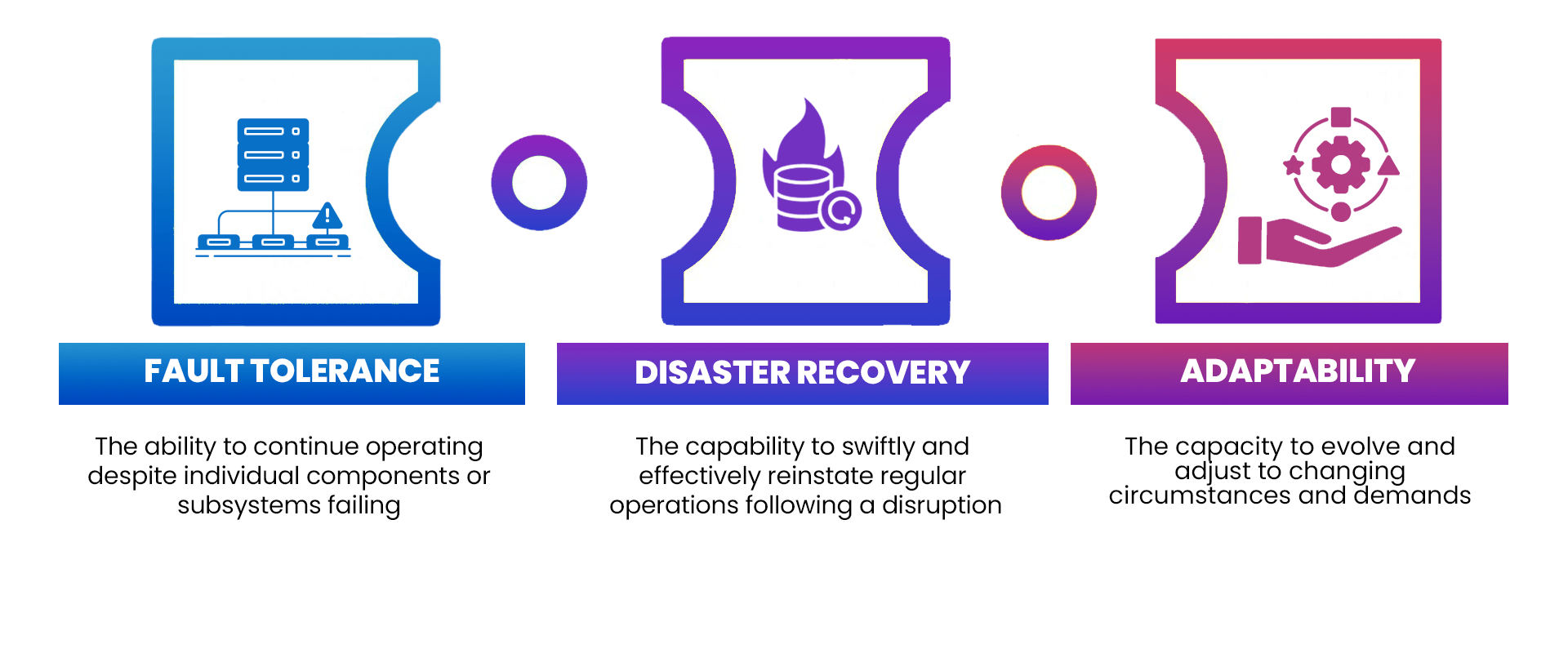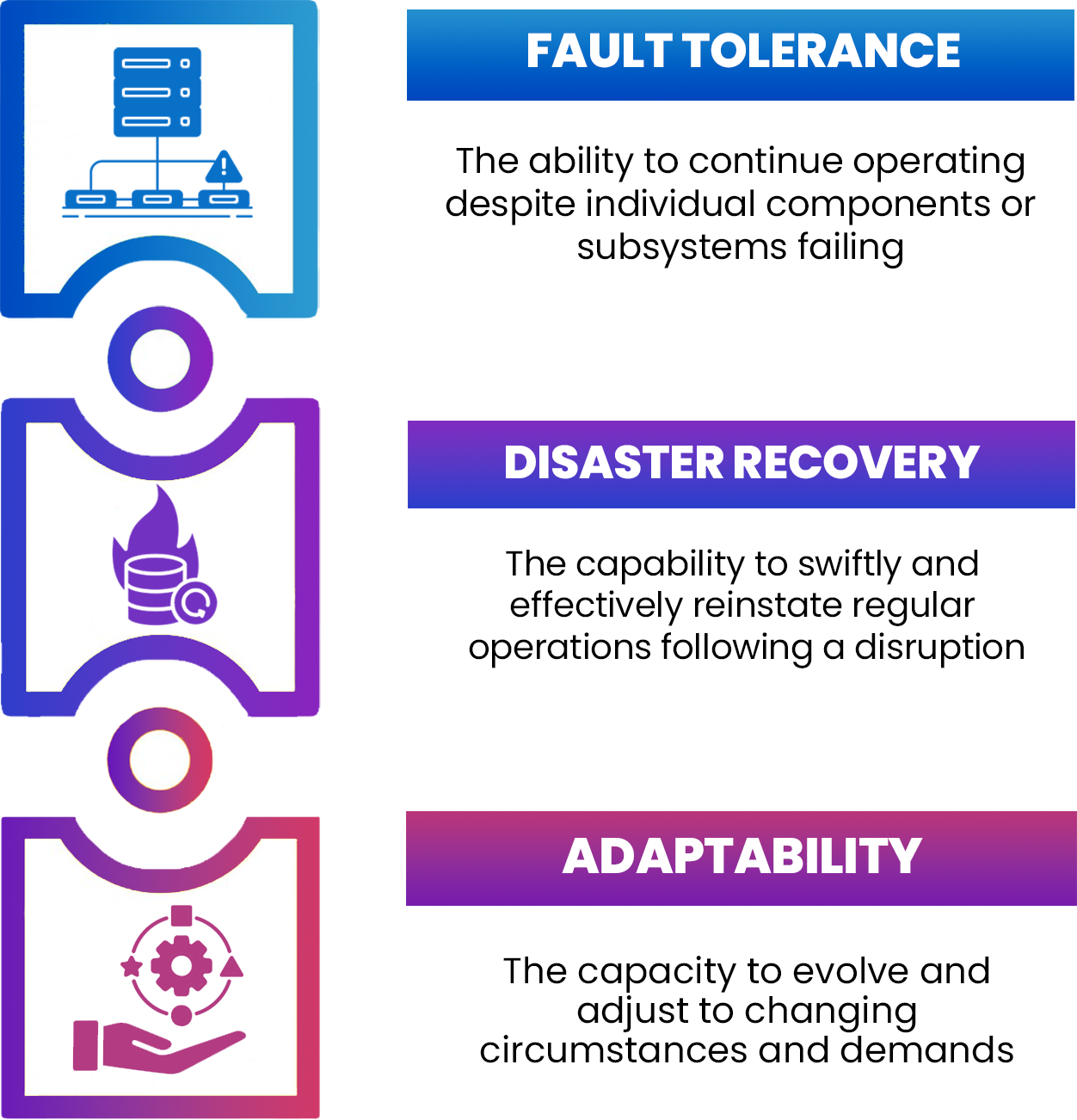We live in a digital-first world where software is the central nervous system for most modern businesses. It handles everything from customer interactions to powering intricate supply chains. As businesses increasingly adopt digital transformation and lean more heavily on software, the fallout from software failures or vulnerabilities becomes more significant, jeopardizing operations, brand reputation, and customer trust. It becomes more evident that software solutions are critical in enhancing business resilience.
What is software resilience?
Software resilience refers to the ability of a software system to withstand, adapt to, and bounce back from disruptions, ensuring uninterrupted service and minimizing the consequences of unexpected events. Building a resilient software system considers the following key components:


Resilience extends beyond mere survival during crises; it is also about emerging from these difficult situations stronger and more capable.
Software resilience in the digital age
Modern software systems encounter numerous challenges that can compromise their resilience. These challenges include cyberattacks, which are predicted to cost the world $10.5 trillion annually by 2025. Bugs and compatibility issues, on the other hand, can result in unexpected downtime and disruptions. And as businesses expand and evolve, their software systems must be able to ensure scalability to meet increasing demands.
Through digital transformation, businesses can acquire the technologies and tactics to construct and sustain resilient software systems. By embracing emerging technologies and best practices, businesses can:
- Design and develop software with resilience in mind.
- Implement robust testing and QA processes.
- Monitor and analyze software performance in real-time.
- Respond quickly and effectively to software incidents.
Pillars of resilience in software-driven transformation
Several core technologies and practices are crucial in building resilient software systems:

Cloud-native architectures
Utilizing the scalability, adaptability, and cost-effectiveness of Cloud platforms, such as AWS, to build highly available and resilient applications. By 2025, over 95% of new digital workloads will be deployed on Cloud-native platforms.

DevSecOps
Practicing nurture collaboration between development, operations, and security teams, enabling faster and more dependable software delivery.

Agile methodologies
Empowering businesses to respond swiftly to evolving requirements and market dynamics.
By adopting these practices, businesses can foster a culture of continuous improvement and innovation, resulting in more resilient software systems.
Future-proofing for business continuity
With constant exposure to risks and looming threats, investing in software resilience guarantees long-term business success, leading to reduced downtime and disruptions, enhanced agility and responsiveness, and improved security and compliance. Through digital transformation, companies can build stronger, more adaptable software systems that protect their operations and customers.
Need help building resilient software systems? Learn more about #StratpointSoftware services.




